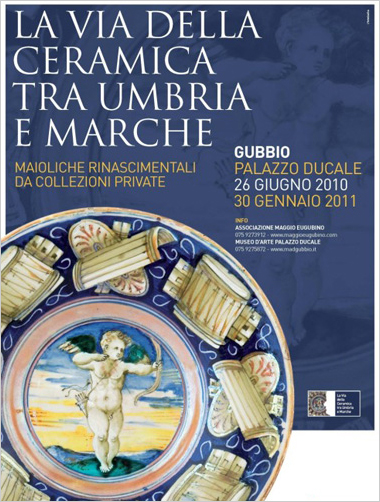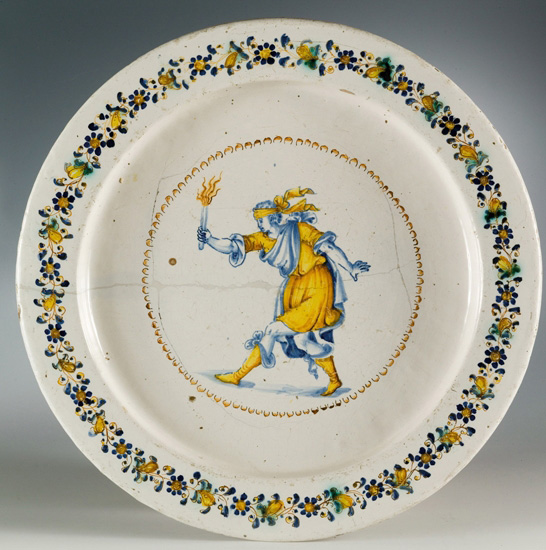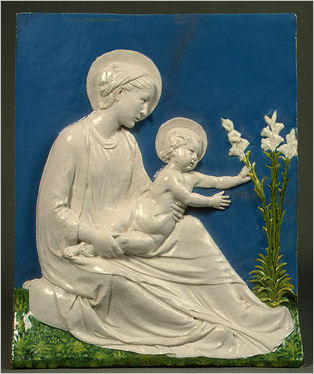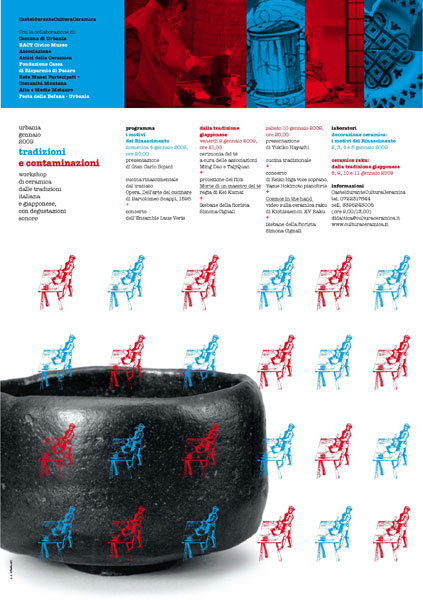February 21 – June 7, 2009
Arezzo – Italy
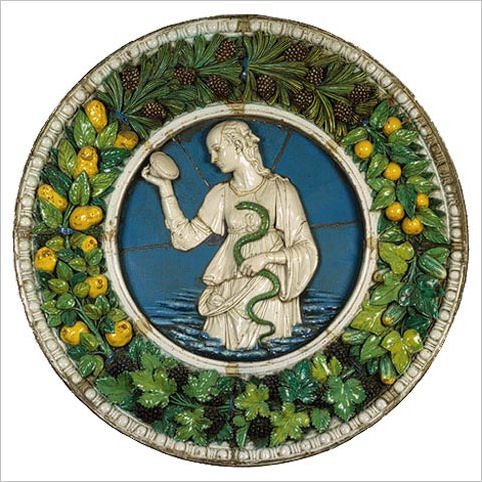 A sumptuous exhibition in Arezzo, Tuscany, will celebrate the glory of Della Robbia family and it will put into a new perspective the relationship between the Renaissance Majolica and the “major” arts.
A sumptuous exhibition in Arezzo, Tuscany, will celebrate the glory of Della Robbia family and it will put into a new perspective the relationship between the Renaissance Majolica and the “major” arts.
More than 150 Ceramic Art Works from the most important Museums of the world will be on view beginning February 21st at the National Art Museum and additional 180 large pieces will be the key attractions of 5 especially designed itineraries along the Valdarno, Valdichiana and Valtiberina valleys and the Casentino mountains.
For the very first time, Della Robbia’s ceramics will be side by side – in open dialogue, as stated by the curators – with contemporary sculptures, paintings, architectural works and decorative art pieces, such as glass, majolica, porcelain, marble and wood mosaics, prints, etc.
This unusual setting will highlight the innovative content of Della Robbia’s works while delighting the visitors with the poetic genius of Renaissance artists: Donatello, Ghiberti, Andrea del Verrocchio, Rossellino, Pisanello, Filippo Lippi, Pollaiolo, Ghirlandaio, Perugino, Lorenzo di Credi, Leonardo, Fra’ Bartolomeo, Domenico Veneziano, Fra’ Carnevale, Sansovino.
Keep reading our Articles for more info on the works and lives of Della Robbia family.
Museo Statale d’Arte Medievale e Moderna
Via S. Lorentino, 8
Arezzo
Open every day from 9 am to 7 pm
Ph. 800 90 44 47 (toll free) or 0039 049 2010067

